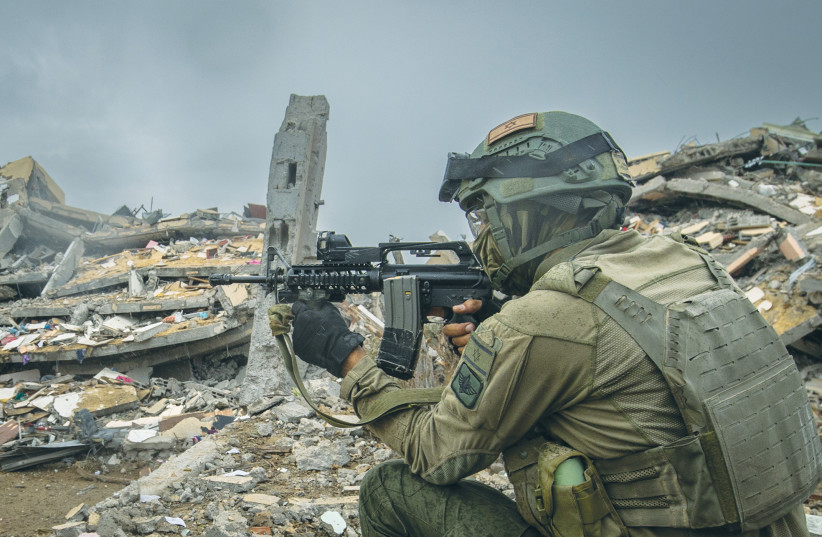The IDF Lotem Technology Unit’s big data collection and analysis capabilities saved hundreds of mourners at a funeral on October 17 from a likely Hamas rocket attack, The Jerusalem Post has learned.
On October 17, the extended Zohar family was due to hold a funeral service in Rishon Lezion for family members killed by Hamas at Nahal Oz during the invasion earlier that month, according to Lotem, part of the IDF’s C4I Branch. Because this was a very large event with expectations for many attendees, it was exactly the type of potential mass casualty event that Hamas would be expected to target, it said.
This was at a time when Hamas was still firing hundreds of rockets per day, including large numbers toward Rishon Lezion and the Tel Aviv area daily.
How the IDF's tech unit broke down Hamas's rocket fire
Lotem analysts broke down Hamas’s rocket firing patterns, which they had gathered using new big data digital gathering tools, and determined where the terrorist group most likely would need to place its rocket launchers to hit the funeral procession.

Aspects of the analysis led to concrete attacks by the IDF against Hamas targets, which otherwise could very well have caused “a disaster” for the mass funeral procession, a Lotem representative told the Post.
This was not the only case during the current war where the IDF was able to utilize vast amounts of data it had gathered in recent or real time to quickly redirect firepower at specific areas on a predictive basis of where Hamas rocket launchers would be located, but the current war was the first time the IDF attained such a capability.
In another specific case, Lotem’s big data capabilities were used to trace a pattern of rockets being fired toward Israel from a mosque and a school in a Gaza civilian area, the Post has learned. Based on an analysis of the data, the IDF’s targeting command was able to eliminate the rocket-launching crews.
More generally, before the IDF invaded Gaza in late October, an extensive analysis was performed by Lotem about where Hamas was likely to position its forces to be able to attack soldiers as they entered critical areas in Gaza.
Using Lotem’s big data, the IDF was able to preemptively target these areas, paving the way for a much “cleaner” entry by the IDF’s larger ground forces into Gaza and leading to much fewer casualties than had been anticipated.
Moreover, Lotem’s big data has been used to preemptively target parts of Gaza where Hamas would need to place its rocket launchers to try to strike IDF mass staging areas near the border before the troops would enter.
All of these achievements were accomplished by the vast amounts of data gathered by Lotem about the firing patterns of Hamas, including launch points, rocket landing points, and the identities of the launch crews to anticipate their next moves before they would make them.
